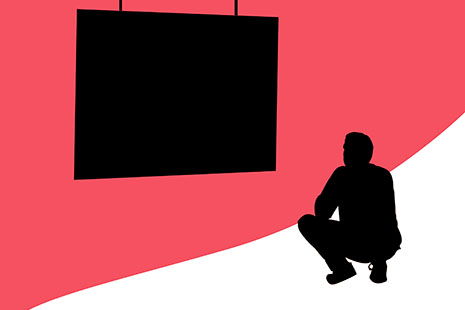IT REALLY is going to happen. We are going to turn off the television. On 3 December, Sydney’s analogue TV transmitters will be switched off. A week later, the ones serving Melbourne and remote central and eastern Australia will be closed and analogue TV in Australia will be gone. For more than half the population, including people in Brisbane and Perth, it already is.
Over-the-air television, of course, won’t be done with, because analogue switch-off is also digital switchover. It will have taken around thirteen years from the start of digital transmission in January 2001 to the final shutdown of analogue, and fifteen years from the first round of legislation that set the rules for the transition.
Today, Australia is in the midst of another great transition in communications technology, the shift to a National Broadband Network. This time, though, the precise destination is not as clear. Until the federal election in September, the NBN was going to be an all-fibre network to 93 per cent of residential and business premises by 2021, allowing the progressive shutdown of Telstra’s copper access network. Now, under the Coalition, it is a mix of technologies offering download speeds of 25–100 mbps to all premises by the end of 2016 and, three years later, at least 50 mbps for 90 per cent of fixed-line users. For most premises, copper wires will still be the final link to the network.
Like the digital TV switchover, the NBN is a long–term plan to transform the delivery of essential communications services. So what lessons might be learned from the transformation of television?
First, governments can orchestrate big, complex, long-term plans that deliver on their main goals. The digital TV switchover was undertaken for two reasons – to transform television and to reap a “digital dividend” of spectrum vacated for alternate uses. Both have occurred. The five free-to-air TV channels available to most Australians in 1998 have expanded to around twenty. All of the three commercial and two publicly funded national broadcasters now provide multichannel services, and they have been joined by new services like the National Indigenous TV service and, in many places, community TV. The “digital dividend,” 126 MHz of UHF spectrum previously used by television services, will be available from the beginning of 2015 for services including wireless broadband. Nearly three-quarters was auctioned earlier this year, of which 60 MHz was acquired by Telstra and Optus Mobile. Spectrum use is being reorganised so that the capacity for digital radio (in the VHF band) will more than double and, for the first time, SBS will have VHF spectrum. This means viewers in all areas will only need a single antenna to watch all digital TV multichannels, including SBS.
It is easy to underestimate how difficult this was. Recall the original policy proposition in the mid 1990s, when mobile telephony was young, subscription TV had just commenced and the internet was largely unheard of. Analogue free-to-air TV ruled. It was available in virtually every household and watched for around three hours a day. Yet here was a plan to turn it off within about a decade. Knowing they would be blamed if it failed, politicians took some convincing. Around the world, most governments gave a lot of help to incumbent broadcasters, compromising the first goal – transforming television – so as to assure the second – freeing up spectrum – while taking care of a third – the politics of media power.
The NBN has already learnt that lesson. The fibre-to-the-premises version launched by Labor in 2009 was a bold plan for government to build and operate most of the network itself. In the end, a lot of money was committed to get the incumbent Telstra on board, providing access to its ducts and poles, migrating its fixed-line traffic, and eventually shutting down its copper network. Now, the Coalition’s proposed use of fibre-to-the-node draws more of Telstra’s existing infrastructure into the future network. The danger is that the new urgency to get the NBN happening faster will compromise other goals, like the separation of Telstra’s wholesale and retail arms, which was such an important justification for the scale of the NBN initiative.
Second, the fundamental features of the digital TV plan always had bipartisan political support at home and widespread endorsement abroad. There were disagreements about the detail, but the Labor opposition agreed with the Coalition government on the big things: that incumbent TV broadcasters would each get an extra channel to simulcast their analogue service while households bought up digital receivers, and that there would be no new commercial TV services during the transition period. Internationally, everyone was doing digital TV switchover. Australia would have had a hard time explaining why it wasn’t.
The NBN has been quite different. It provided a critical policy difference between the major parties at the last two elections, and the scale of its fibre-to-the-premises ambition made it an international policy outlier. Over time, both of these positions have eased. Almost every country has a national broadband plan now, reversing or at least moderating the privatising trend of the last quarter century. The Coalition now says it shares Labor’s goal of faster and cheaper broadband for all Australians, and its new broadband policy certainly involves a much higher level of public investment than the one it took to the 2010 election. On the other hand, fibre to 93 per cent of all premises is still a global policy outlier. Labor’s commitment to it, or at least to the timeframe over which it is achieved, may be tested if the Coalition succeeds in getting considerably faster fixed-line broadband to a lot of the places most in need of it by the next election. For the time being, it is the Coalition sitting all the tests.
Third, over the life of a long-term plan, things change and policy needs to adapt. Elements of the digital TV policy that were daft from the start, like the prohibition on broadcasters providing multichannel TV services, had to be changed. Sensible extra measures were developed to help achieve the goals, like the VAST satellite service that delivers the full suite of digital TV channels to people in remote areas and places with poor over-the-air reception, meaning fewer digital transmitters had to be installed on the ground. The timing can be altered, and even the ultimate goal can be adapted: Australia eventually chose a bigger digital dividend than most other countries, requiring further changes (“restacking”) to the frequencies used by TV broadcasters in many areas.
The four-and-a-half-year-old NBN is doing a good deal of adapting. Because the all-fibre network was taking longer than planned, it has become less tenable to expect already poorly served premises to keep waiting for any kind of improvement. As the cost of the all-fibre network and the revenue needed to deliver an acceptable return on capital have been more carefully analysed, closer attention has been paid to the affordability of the new network, especially for those likely to be most price-sensitive. As fixed-line technology has continued to develop, the consequences of leaving network deployment in NBN Co’s single set of hands have become more troubling.
Fourth, despite the apparent smoothness of the digital TV transition, people have been and continue to be affected differently. In the areas that are switching over to digital TV in the second half of 2013, just 5 per cent of households hadn’t already converted their main TV set to digital at the end of June, but the proportion varied considerably for different groups: it was 14 per cent in remote central and eastern Australia, 13 per cent for aged-pensioner households and 12 per cent for households whose main source of income is a government pension or benefit. The government’s tracking research shows plenty of people are still not thrilled about having to buy new TVs or the reception problems some encounter when they do. In the future, digital natives might be more relaxed about constant upgrades and switchovers than digital TV laggards, but digital consumers might be very noisy if things don’t go to plan.
Fifth, over the fifteen years since the first digital TV legislation, we have seen some trends in the media and communications business that were entirely predictable, others that were broadly predictable but played out in less predictable ways, and other things that were much more surprising. That seems a useful template for anticipating the future now.
The predictables? Much, much more content was made available and audiences took to it. Subscription TV grew and the major provider, Foxtel, became the country’s biggest TV operation. Free-to-air TV’s place in the media business became less central, though still important. Online advertising grew but its capacity to cross-subsidise the production of some existing forms of media content declined. Digital TVs got cheaper, and as they did, people bought more of them. Without its biggest personality, Kerry Packer, the free-to-air TV industry and its relationship with government changed, though not completely.
The broadly predictable unpredictables? A central part of the sales pitch for digital transmission was that TV would become more interactive. It happened, but not in the “red-button-interactivity” ways that dominated industry and policy discussion in the early days. Instead, audiences have used separate, mainly handheld “second screen” devices to engage with TV programming via SMS, Twitter and other social media, both spontaneously and in response to broadcasters’ integration of these practices into programming. This has provided a far richer “return path” than was widely contemplated but is quite unlike the “internet-on-TV” vision that some promoted. These devices have also helped fulfil the expectation that TV viewing would become more mobile, although that has happened via mobile broadband and WiFi, not through dedicated broadcasts using the mobile version of the digital transmission standard deployed by TV broadcasters.
The surprises? Everyone will have their nominations. Tablets, a wholly new category of mobile device with a screen somewhere between phone-size and PC-size? Widespread viewing of long-form TV programming on handheld devices? The local television industry’s reluctance to work more co-operatively to promote the free-to-air digital platform, initially through an integrated electronic program guide and more recently through a joint catch-up TV service? The tiny number of bidders for the digital dividend spectrum, long touted as the name-your-price waterfront property of the information age?
Digital TV’s position as the dominant media policy issue of the day in the late 1990s didn’t last long. It was passing even as it was being decided. Broadband was beginning to emerge as the next great challenge, then fast broadband. The continuing growth of mobile broadband suggests that universal access to it may become a hot policy concern, just as access to basic mobile telephony was during the privatisation of Telstra. As some kind of fixed-line NBN is built, the case may grow for television to switch over again, this time off radiofrequency spectrum and onto NBN’s wires. Someday, someone will propose turning off television altogether. Each choice will set the parameters for the next ones, constraining some possibilities while enabling others.




